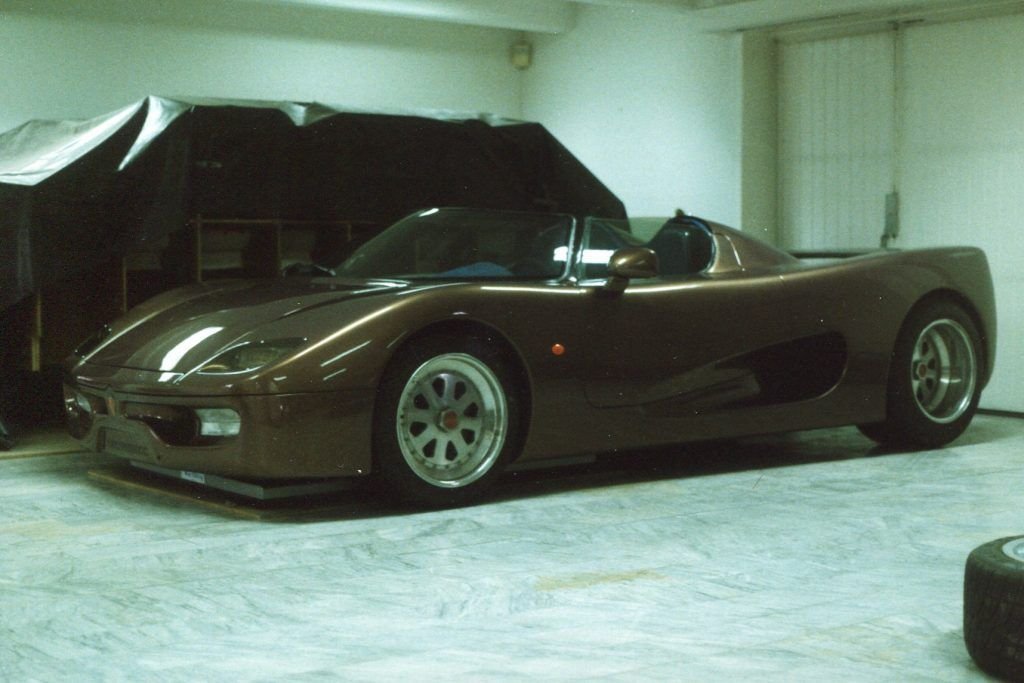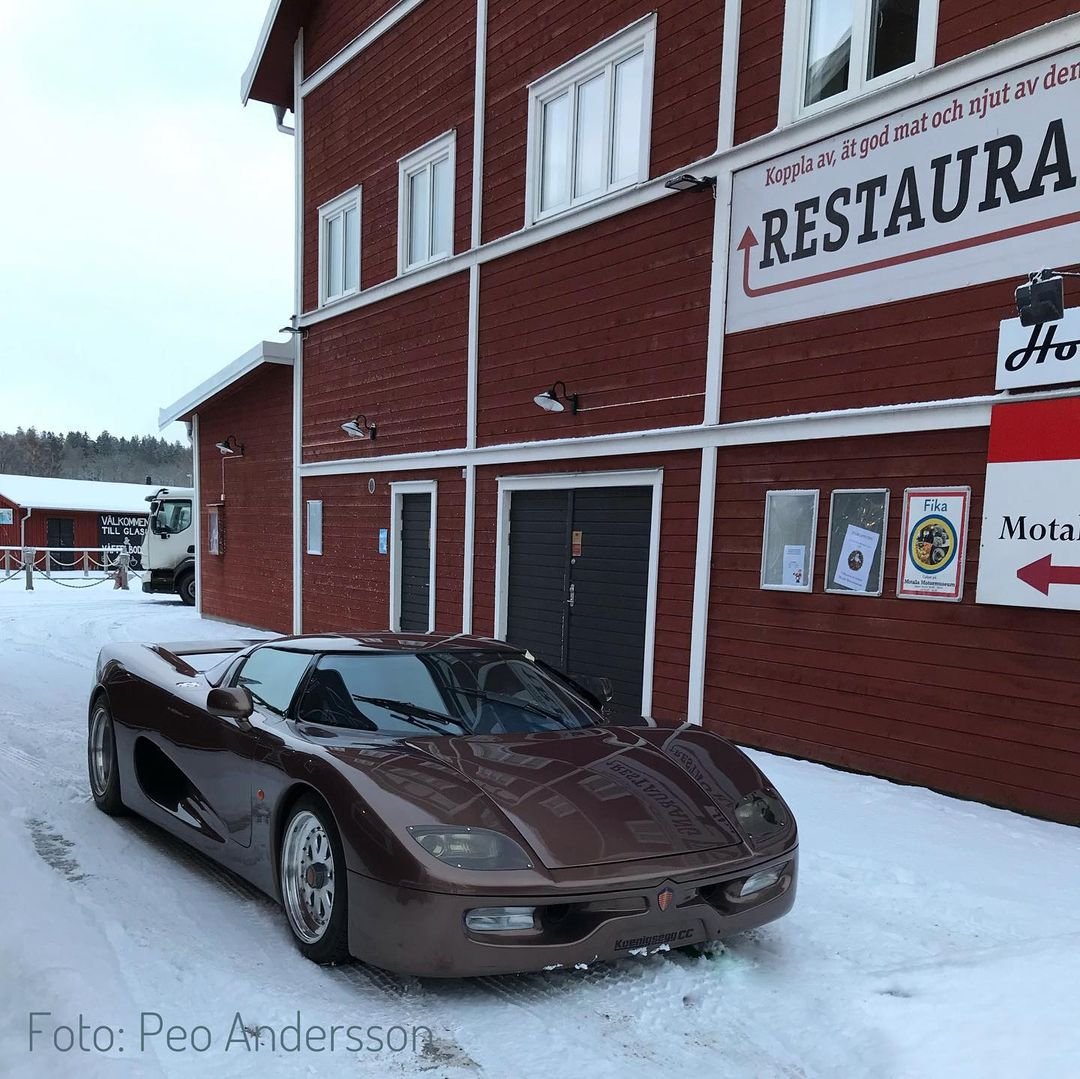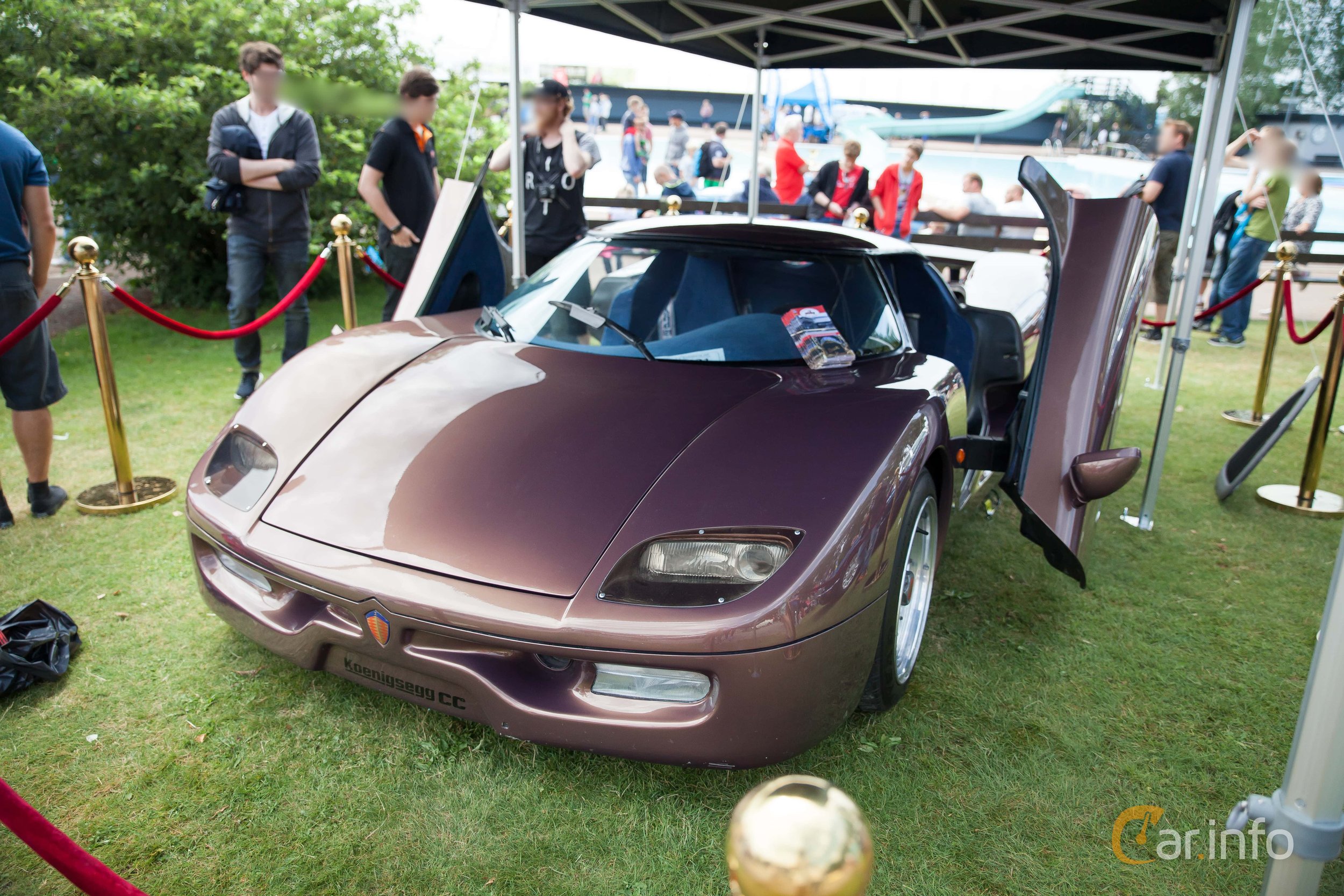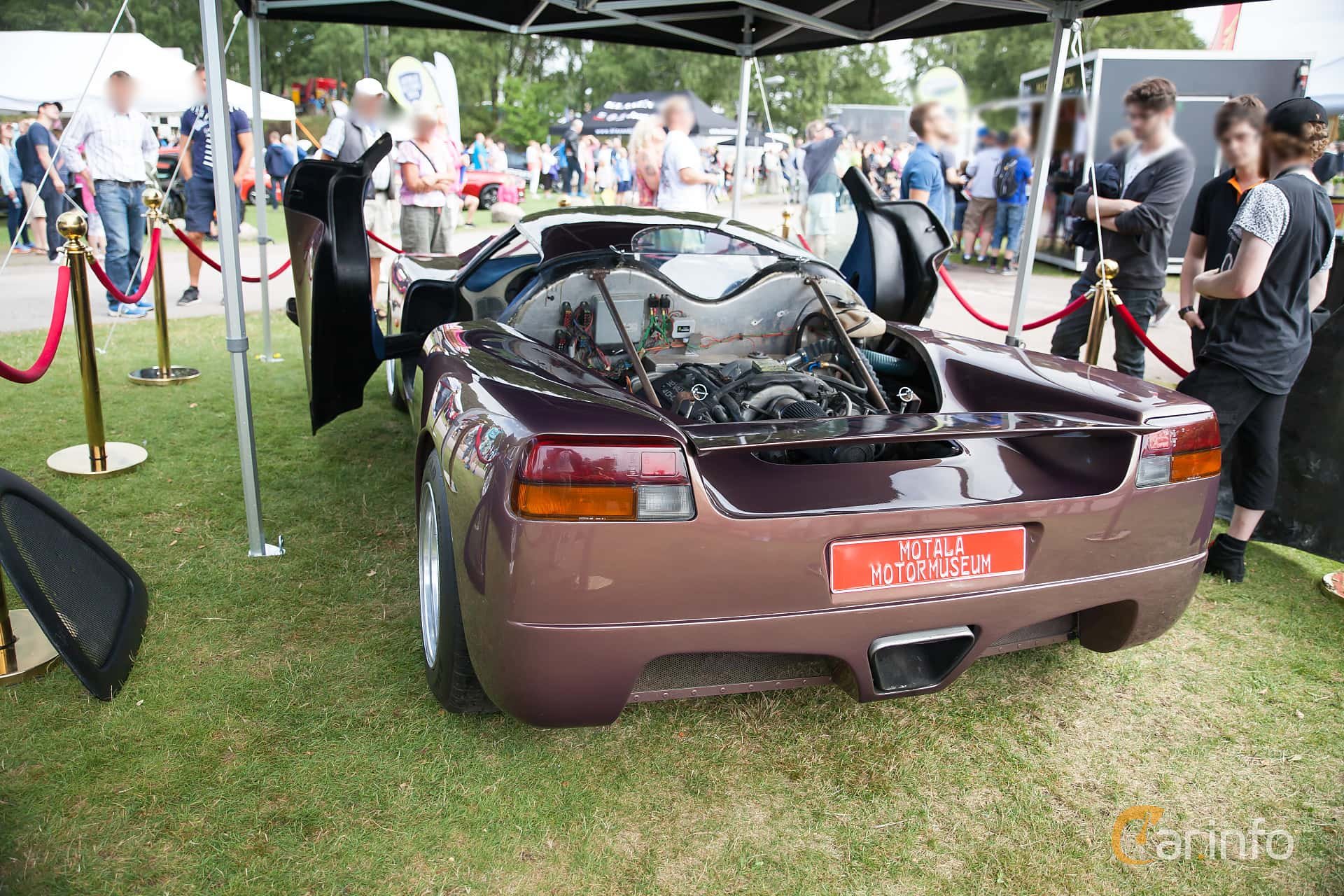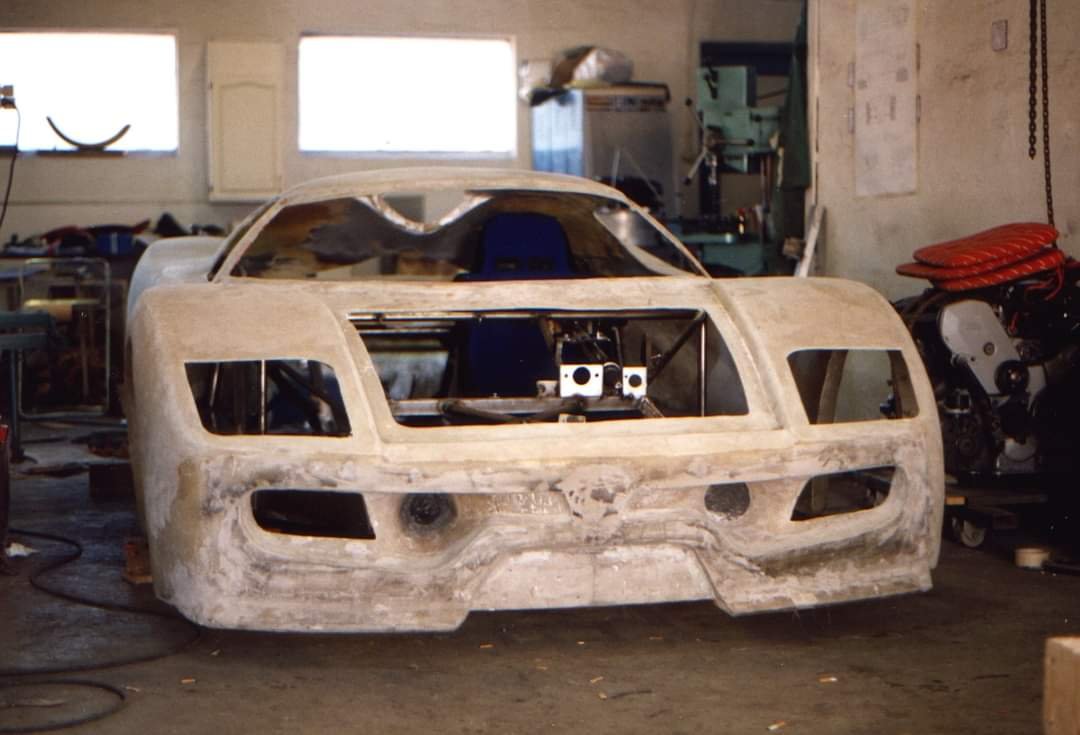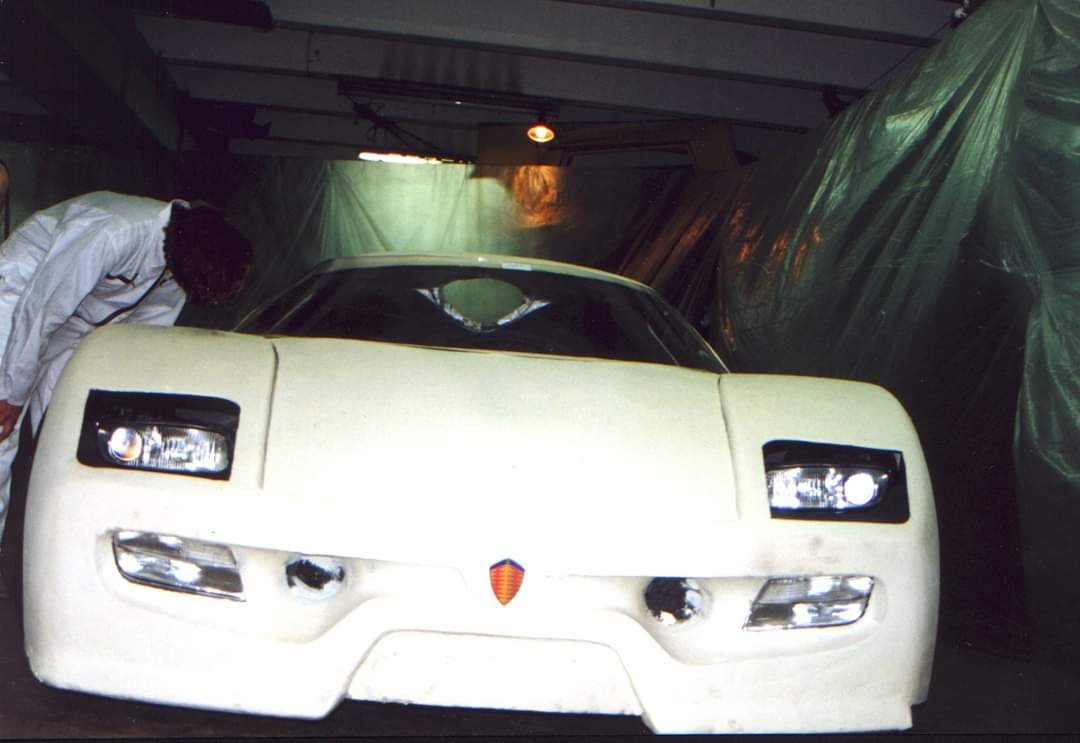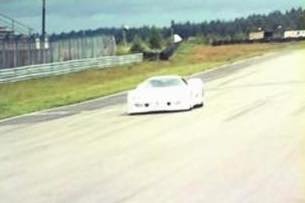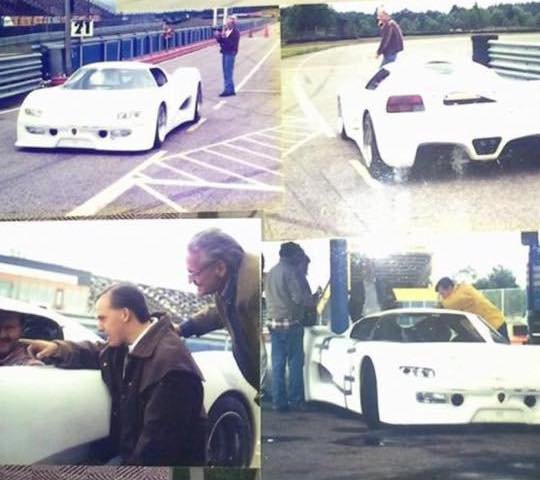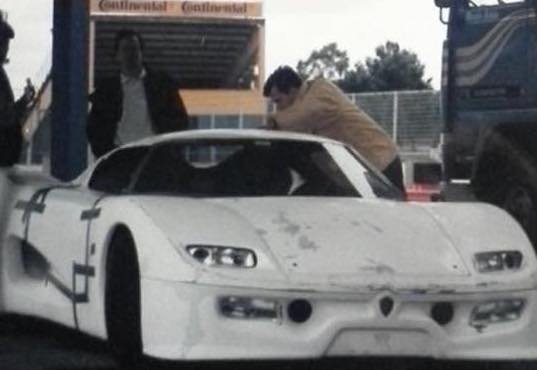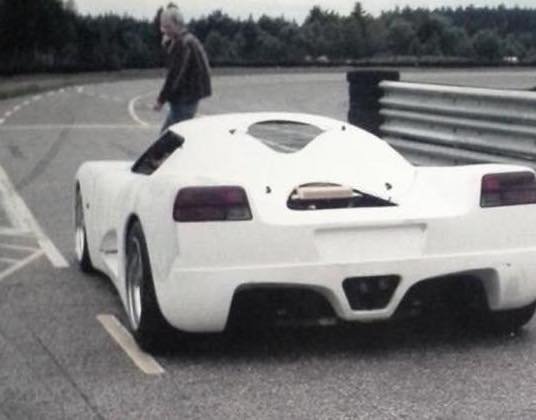First Drivable Prototype (FDP)
VIN: N/A
Country: Sweden
Left-Hand Drive
General History
The First Drivable Prototype was based on the unfinished Sethera Falcon, a project by Svenharry Åkesson and his kit car company Sethera, commissioned by the Swedish brewery Falcon in 1993. Due to a lack of funding from the brewery the Sethera Falcon was never finished. In the latter half of 1994, a young Christian von Koenigsegg found the project in Swedish car magazine Bilsport, and, together with Svenharry and a small team, they started work on the Sethera Falcon. The initial work was carried out in Svenharry’s own workshop in Landskrona, a city south of Ängelholm, up until late 1995, when the project was moved to Koenigsegg’s factory in Olofström.
The engine placement and a lot of the interior placement was changed, the body was remodeled to fit Christian’s and designer David Craaford’s vision, and the chassis was modeled and finalized. The work was carried out from the spring of 1995 into the summer of 1996, and when finished the car was now called Koenigsegg CC, or as we in the Registry likes to call it, “the First Drivable Prototype”, FDP for short.
When the FDP was finished its first public showing was at the 1996 BPR-races at Scandinavian Raceway in Anderstorp, the only Swedish F1 track ever. Drivers present for this first showing were Picko Troberg, Rickard Rydell, and Calle Rosenblad, who afterwards gave much credit to the handling and driving characteristics of the car. An interesting anecdote is that the tent which the car stood under blew down on the car shortly before its covers were removed, but luckily the car was undamaged! The first international premiere of the car happened during the Cannes Film Festival in 1997, and the car was well received by the attendees.
In 2003 the car was saved from the flames when the Margretetorp factory burned to the ground, where it had been stored. Since the car was no longer needed it had been given to one of Koenigsegg’s lawyers as payment for his services, and it eventually ended up at Motala Motormuseum in Sweden. It remained at the museum for 16 years from 2006 until December 2022, with just a few outings in that period. Notable is the first public outing in several years at Halmstad Sports car meet in 2015, and a service and photoshoot at the Koenigsegg factory in September of that year. In December 2022, the car left Motala. It is rumoured to have gone to the Koenigsegg factory, with an overseas buyer, allegedly based in Dubai, lined up. What the future will hold for the First Drivable Prototype we do not know, but we are excited to follow its journey.
Exterior Spec
The body, made out of both kevlar and carbon fiber and in some parts held up by MDF(!), stayed mostly the same during the car’s life, but transparent headlight covers were added and a different engine outlet was mounted eventually. The taillights were picked from the Daihatsu Applause, while the headlights came from the Mazda 323F. The wheels chosen were BBS barrels with custom made centers.
Initially the exterior was painted silver, but was quickly repainted to black, after the conventional doors were rebuilt to an early version of the now classic dihedral synchro-helix actuation doors in time for the Cannes Film Festival in 1997. Black, as it turned out, wasn’t the best paint to use on a prototype driven several thousand kilometers, so by around 1998 the car was once again repainted.
At this time, Volvo had recently debuted the Volvo Saffron color, and Christian wanted that paint on the FDP. Because of work Christian wasn’t able to be on location to choose and show the color to the paintshop, instead it was decided over the phone. When the car was picked up from paint it turned out the painter misunderstood and painted the car in a completely different paint, a flip paint seen on mostly Volvo 9-series cars.
The paint shifted from brown metallic to a deep purple metallic, but the next Koenigsegg prototype, CCV8S #7XX1, was already getting built at the time, which meant that the FDP’s use was almost over, and the paint was left as was on the car.
Interior Spec
When FDP was finished in 1996 it sported a blue firewall, blue and oatmeal dashboard and door panels, along with oatmeal seats. When the car was repainted black it received new carbon fiber seats with blue inlays, and blue door panels with cutouts for the dihedral synchro-helix actuation door system, while keeping the blue and oatmeal dashboard. The car retained this interior spec when it was repainted to its final exterior spec.
Engine & Chassis Spec
The engine of choice for the FDP was initially the 3.6 liter V8 from a crashed, Swedish Audi 8-series, but when Koenigsegg managed to get hold of a very nice Audi 8-series from Germany, with the 4.2 liter V8, it was quickly decided that the FDP should have the bigger engine. The 4.2 liter engine was removed from the German car, and the smaller engine from the crashed car was mounted in the German car, which was then sold. The transmission used is a 6-speed Audi transaxle with a gated shifter, and the engine runs on the stock Audi/Bosch ECU.
The chassis is part steel half-monocoque and part tubular, with custom made suspension designed together with Dag Bölenius, utilizing Öhlins shock absorbers.
Photo Credit to Juno Liljekvist, Motala Motor Museum (Peo Andersson), Jarbo from Carinfo, and Giuseppe Bagnoli.
